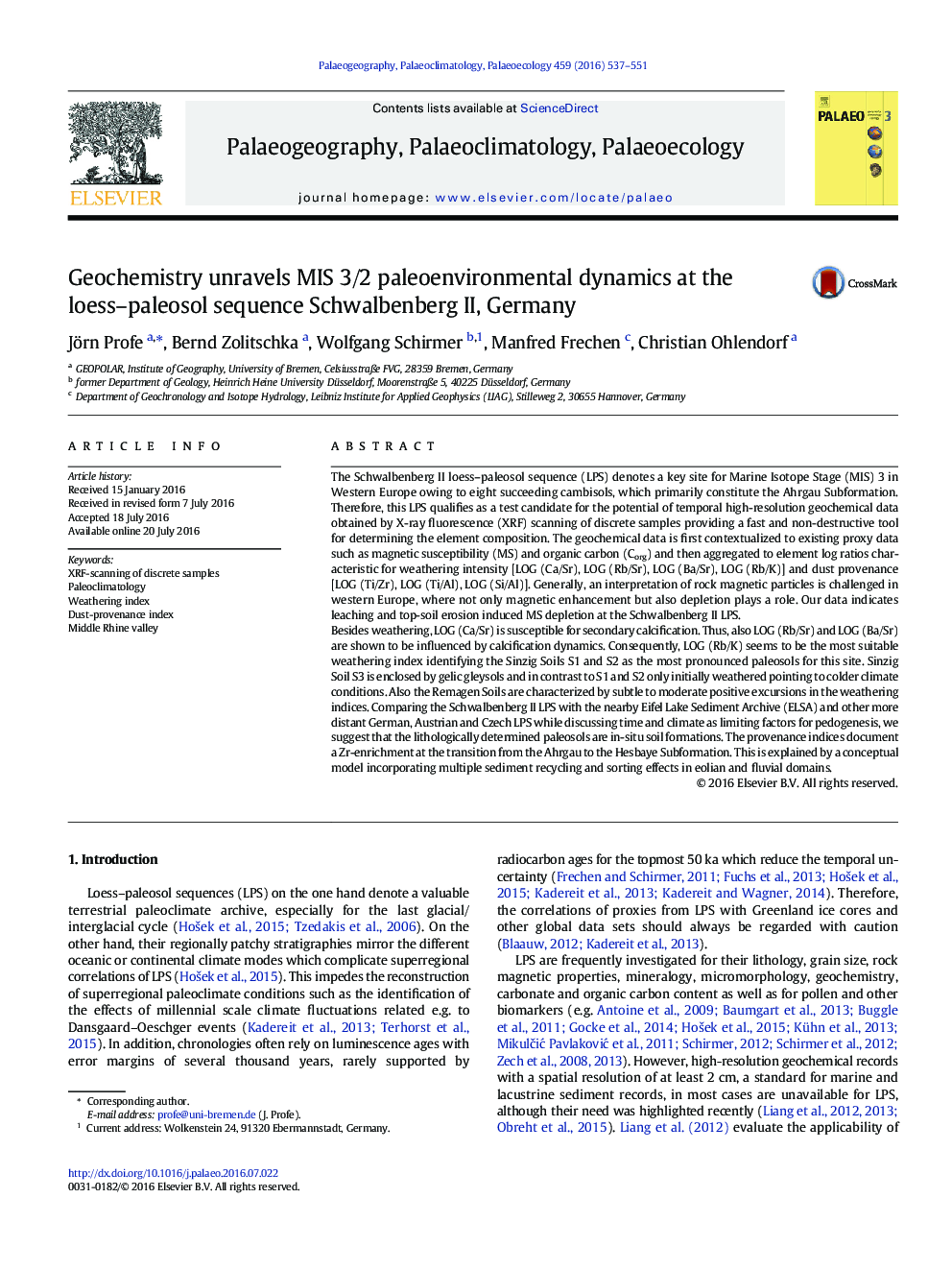| کد مقاله | کد نشریه | سال انتشار | مقاله انگلیسی | نسخه تمام متن |
|---|---|---|---|---|
| 4465654 | 1622132 | 2016 | 15 صفحه PDF | دانلود رایگان |

• Western European key site for MIS 3
• XRF-scanning of discrete samples provides temporal high-resolution geochemistry.
• Weathering indices identify Sinzig Soils S1 and S2 as most intense paleosols.
• Zr suggests multiple sediment recycling and sorting in fluvial and eolian domains.
The Schwalbenberg II loess–paleosol sequence (LPS) denotes a key site for Marine Isotope Stage (MIS) 3 in Western Europe owing to eight succeeding cambisols, which primarily constitute the Ahrgau Subformation. Therefore, this LPS qualifies as a test candidate for the potential of temporal high-resolution geochemical data obtained by X-ray fluorescence (XRF) scanning of discrete samples providing a fast and non-destructive tool for determining the element composition. The geochemical data is first contextualized to existing proxy data such as magnetic susceptibility (MS) and organic carbon (Corg) and then aggregated to element log ratios characteristic for weathering intensity [LOG (Ca/Sr), LOG (Rb/Sr), LOG (Ba/Sr), LOG (Rb/K)] and dust provenance [LOG (Ti/Zr), LOG (Ti/Al), LOG (Si/Al)]. Generally, an interpretation of rock magnetic particles is challenged in western Europe, where not only magnetic enhancement but also depletion plays a role. Our data indicates leaching and top-soil erosion induced MS depletion at the Schwalbenberg II LPS.Besides weathering, LOG (Ca/Sr) is susceptible for secondary calcification. Thus, also LOG (Rb/Sr) and LOG (Ba/Sr) are shown to be influenced by calcification dynamics. Consequently, LOG (Rb/K) seems to be the most suitable weathering index identifying the Sinzig Soils S1 and S2 as the most pronounced paleosols for this site. Sinzig Soil S3 is enclosed by gelic gleysols and in contrast to S1 and S2 only initially weathered pointing to colder climate conditions. Also the Remagen Soils are characterized by subtle to moderate positive excursions in the weathering indices. Comparing the Schwalbenberg II LPS with the nearby Eifel Lake Sediment Archive (ELSA) and other more distant German, Austrian and Czech LPS while discussing time and climate as limiting factors for pedogenesis, we suggest that the lithologically determined paleosols are in-situ soil formations. The provenance indices document a Zr-enrichment at the transition from the Ahrgau to the Hesbaye Subformation. This is explained by a conceptual model incorporating multiple sediment recycling and sorting effects in eolian and fluvial domains.
Journal: Palaeogeography, Palaeoclimatology, Palaeoecology - Volume 459, 1 October 2016, Pages 537–551